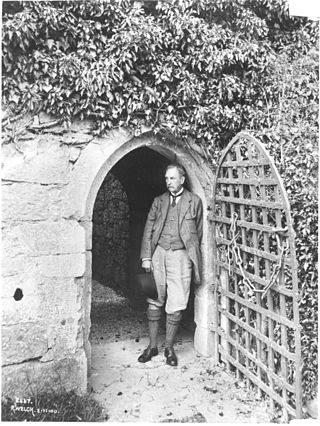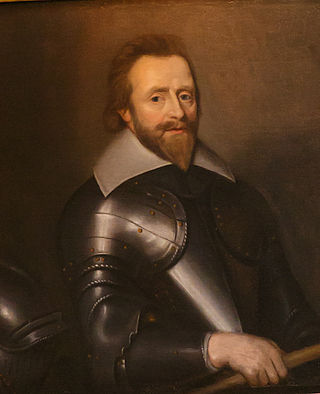Related Research Articles

Marquess of Headfort is a title in the Peerage of Ireland. It was created in 1800 for Thomas Taylour, 2nd Earl of Bective.

Marquess of Sligo is a title in the Peerage of Ireland. It was created in 1800 for John Browne, 3rd Earl of Altamont. The Marquess holds the subsidiary titles of Baron Mount Eagle, of Westport in the County of Mayo, Viscount Westport, of Westport in the County of Mayo, Earl of Altamont, in the County of Mayo, Earl of Clanricarde and Baron Monteagle, of Westport in the County of Mayo. All these titles are in the Peerage of Ireland, except the Barony of Monteagle, which is in the Peerage of the United Kingdom. The latter peerage entitled the Marquesses to a seat in the House of Lords prior to the House of Lords Act 1999. The Earldom of Clanricarde was inherited by the sixth Marquess in 1916 according to a special remainder in the letters patent.

Marquess of Ely, of the County of Wexford, is a title in the Peerage of Ireland. It was created in 1800 for Charles Loftus, 1st Earl of Ely. He was born Charles Tottenham, the son of Sir John Tottenham, 1st Baronet, who had been created a baronet, of Tottenham Green in the County of Wexford, in the Baronetage of Ireland in 1780, by Elizabeth, daughter of Nicholas Loftus, 1st Viscount Loftus, sister and heiress of Henry Loftus, 1st Earl of Ely. In 1783 he succeeded to the Loftus estates on the death of his maternal uncle the Earl of Ely and assumed the same year by Royal licence the surname of Loftus in lieu of his patronymic. In 1785 he was raised to the Peerage of Ireland as Baron Loftus, of Loftus Hall in the County of Wexford. It was sold by the family in 1917 and is today owned by the Quigley family.

Earl of Kingston is a title in the Peerage of Ireland. It was created in 1768 for Edward King, 1st Viscount Kingston. The Earl holds the subsidiary titles Baron Kingston, of Rockingham in the County of Roscommon, Viscount Kingston, of Kingsborough in the County of Sligo, Baron Erris, of Boyle in the County of Roscommon, and Viscount Lorton, of Boyle in the County of Roscommon, also in the Peerage of Ireland. He is also a baronet in the Baronetage of Ireland. Between 1821 and 1869 the earls also held the title Baron Kingston, of Mitchelstown in the County of Cork, in the Peerage of the United Kingdom.

Earl of Effingham, in the County of Surrey, is a title in the Peerage of the United Kingdom, created in 1837 for Kenneth Howard, 11th Baron Howard of Effingham, named after the village of Effingham, Surrey, where heads of the family owned the manor.

Viscount Hardinge, of Lahore and of Kings Newton in the County of Derby, is a title in the Peerage of the United Kingdom. It was created in 1846 for the soldier and Tory politician Sir Henry Hardinge. His son, the second Viscount, represented Downpatrick in Parliament. His great-great-grandson, the sixth Viscount, succeeded a distant relative as eighth Baronet, of Belle Isle in the County of Fermanagh, in 1986. This title had been created in the Baronetage of the United Kingdom 1801 for Richard Hardinge. He was the third son of Nicolas Hardinge, younger brother of Reverend Henry Hardinge and uncle of the latter's third son Henry Hardinge, 1st Viscount Hardinge. The baronetcy was created with special remainder to the heirs male of Richard Hardinge's father.
Baron de Freyne, of Coolavin in the County of Sligo, is a title in the Peerage of the United Kingdom. It was created in 1851 for Arthur French, 1st Baron de Freyne, with remainder to his younger brothers John, Charles and Fitzstephen French. He had earlier represented County Roscommon in the House of Commons and later served as Lord Lieutenant of County Roscommon. French had already been created Baron de Freyne, of Artagh in the County of Roscommon, in 1839, also in the Peerage of the United Kingdom but with normal remainder to heirs male. Lord de Freyne was childless and on his death in 1856 the barony of 1839 creation became extinct. The barony of 1851 creation survives according to the special remainder by his younger brother John, the second Baron.
Baron Egerton, of Tatton in the County Palatine of Chester, was a title in the Peerage of the United Kingdom. It was created on 15 April 1859 for William Egerton (1806–1883), a politician from the Egerton family.
This is a list of people who served as Lord Lieutenant of County Roscommon.
Baron Fermoy is a title in the Peerage of Ireland. The title was created by Queen Victoria by letters patent of 10 September 1856 for Edmond Roche.
Lieutenant-General Thomas Mahon, 2nd Baron Hartland, styled Hon. Thomas Mahon from 1800 to 1819, was an Irish soldier, politician and peer. Son of a landed proprietor with an estate at Strokestown, he joined the British Army, serving for most of his career with the 9th Light Dragoons. His garrison skillfully ambushed and destroyed a force of United Irishmen at the Battle of Carlow in 1798. He briefly represented County Roscommon in the Irish and UK Parliaments as part of his father's successful scheme to obtain a peerage by supporting the Union, but this was not popular with the county electors, and he abandoned Parliament in 1802 to return to the military. He had the misfortune to be present at two military debacles of the Napoleonic Wars, the second invasion of the Río de la Plata and the Walcheren Campaign, and while he was not personally implicated in either, he saw no further notable military service. Mahon succeeded his father as Lord Hartland in 1819 and died without issue in 1835, his title and estates passing to his youngest brother.
Viscount Barnewall, of Kingsland in the Parish of Donabate in the County of Dublin, was a title in the Peerage of Ireland. It was created on 29 June 1646 for Nicholas Barnewall, who had earlier represented County Dublin in the Irish House of Commons. The Kingsland Barnewalls were a junior branch of the family of Baron Trimleston; Nicholas's great-grandfather Sir Patrick Barnewall had achieved political eminence largely through his friendship with Thomas Cromwell and had done well out of the Dissolution of the Monasteries. Nicholas was made Baron Turvey at the same time, also in the Peerage of Ireland. His grandson, the third Viscount, was a supporter of James II and was outlawed as a result. However, he was restored to his titles and estates under the Treaty of Limerick. His son, the fourth Viscount, was a Roman Catholic and consequently disqualified from taking his seat in the Irish House of Lords. He was childless and was succeeded by his nephew, the fifth Viscount. He was the son of the Honourable George Barnewall, younger son of the third Viscount. He died unmarried in 1800 when the titles became dormant. They were successfully claimed in 1814 by Matthew Barnewall, who became the sixth Viscount. He was the great-grandson of the Honourable Richard Barnewall, younger son of the first Viscount. However, he had no surviving male issue and on his death in 1834 the titles are considered to have become extinct.

Baron Clonbrock, of Clonbrock in the County of Galway, was a title in the Peerage of Ireland. It was created on 3 June 1790 for Robert Dillon, who had earlier represented Lanesborough in the Irish House of Commons. His grandson, the third Baron, sat in the House of Lords as an Irish Representative Peer and served as Lord-Lieutenant of Galway. He was succeeded by his eldest son, the fourth Baron. He was also an Irish Representative Peer and Lord-Lieutenant of Galway. The title became extinct on the death of his son, the fifth Baron, on 1 November 1926.
Baron Mount Sandford, of Castlerea in the County of Roscommon, was a title in the Peerage of Ireland. It was created on 31 July 1800 for Henry Sandford, with remainder in default of male issue of his own, to his brothers William Sandford and George Sandford, and the heirs male of their bodies. He had previously represented Roscommon Borough in the Irish House of Commons. He was succeeded according to the special remainder by his nephew, the second Baron. He was the son of William Sandford. Lord Mount Sandford was kicked to death during a brawl at Windsor on his way to the Ascot races in 1828. He was succeeded by his uncle, the third Baron. He had previously represented County Roscommon and Roscommon Borough in the Irish Parliament. The barony became extinct on his death on 25 September 1846. The Sandford family descended from Theophilus Sandford, who was granted lands at Castlerea in County Roscommon in reward for his services during the English Civil War. His grandson Robert Sandford was a member of the Irish Parliament for County Roscommon. The latter's eldest son, Henry Sandford, also represented this constituency in the Irish Parliament. Henry Sandford eldest son was the first Baron Mount Sandford.

There have been two baronetcies created for members of the Coote family. The first is Coote of Castle Cuffe, while the second is Coote of Donnybrooke, both in the Baronetage of Ireland. As of 2020, the first creation is still extant. The holders of the first creation also held the title of Earl of Mountrath between 1660 and 1802.
Maurice Mahon, 1st Baron Hartland, was an Irish politician and landowner. He and his sons intermittently represented County Roscommon in the Parliament of Ireland and the United Kingdom Parliament. He was able to transform his support of the Union of Great Britain and Ireland into a peerage, but was frustrated in his subsequent desire to become a viscount.

Strokestown Park House is a Palladian style Georgian house in Strokestown, County Roscommon, Ireland, set on about 300 acres (120 ha).
Maurice Crosbie, 1st Baron Brandon, was an Irish politician and peer.
Maurice Mahon, 3rd Baron Hartland was a Church of Ireland clergyman and Irish peer.
Major Denis Mahon was the Irish Landlord of Strokestown in County Roscommon who was shot and killed during the Great Famine of Ireland. His death is considered the first murder of a Landlord during the Great Famine and to this day there is debate over the real reason for his murder and the identity of those responsible. Mahon's murder caused panic among the aristocracy and turned English public opinion against the Irish in the midst of the Black ‘47.
References
- ↑ "No. 15281". The London Gazette . 5 August 1800. p. 890.
- ↑ "Nicholas Mahon Esq". www.irelandxo.com. Retrieved 13 February 2023.